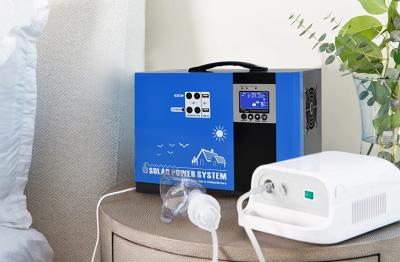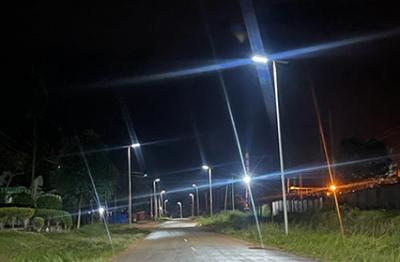
In recent years, the adoption of solar energy systems has surged as people seek cleaner and more sustainable sources of power. Hybrid solar inverters, a crucial component of such systems, have emerged as versatile solutions capable of handling not only the generation and utilization of solar energy but also managing grid failures effectively. In this article, we delve into the workings of hybrid solar inverters and how they seamlessly navigate grid failures to provide uninterrupted power supply.
Hybrid solar inverters, also known as multi-mode inverters, bridge the gap between traditional grid-tied inverters and off-grid inverters. They enable solar energy systems to operate in diverse modes, catering to various scenarios, including normal grid operation, excess energy export, and, crucially, during grid failures.
Under normal conditions, hybrid solar inverters work as grid-tied inverters, converting the direct current (DC) power generated by solar panels into alternating current (AC) power that can be used by household or industrial appliances. Excess energy can be directed back into the grid, sometimes even earning credits through net metering.
However, when a grid failure occurs due to storms, maintenance, or other reasons, hybrid solar inverters rapidly transition into a backup mode. This transformation is nearly instantaneous, thanks to advanced detection mechanisms that sense grid status changes. Once a grid outage is detected, the inverter isolates the system from the grid, preventing back-feeding of electricity.
The standout feature of hybrid solar inverter is their ability to switch to battery backup mode during grid failures. In this mode, the inverter operates independently of the grid, creating an "island" microgrid powered by the energy stored in connected batteries. This allows essential loads, predetermined by the user, to continue running uninterrupted.
During this phase, the inverter dynamically manages the flow of power between the solar panels, batteries, and critical loads. Prioritizing essential devices ensures that households, businesses, or facilities maintain access to vital electricity even during prolonged outages. This capability enhances energy resilience and addresses one of the main concerns associated with solar energy systems – their dependency on a consistent grid connection.
Many hybrid solar inverters come equipped with intelligent energy management systems that optimize the use of available resources. These systems intelligently balance energy generation from solar panels, energy storage in batteries, and the demand from connected loads. By making real-time decisions based on the available resources, these inverters ensure efficient energy utilization and extend battery life, especially when grid failures lead to extended backup periods.
Once grid power is restored, hybrid solar inverters smoothly transition back to grid-tied mode. They synchronize their output with the grid, resuming the export of excess energy generated by the solar panels. Simultaneously, these inverters may start recharging the batteries in preparation for any potential future grid disruptions, maintaining a ready state for subsequent power outages.
Modern hybrid solar inverters often come with remote monitoring and control capabilities, allowing users to oversee the system's performance and status. Through smartphone apps or web dashboards, users can keep track of battery levels, inverter functions, and energy flows. This remote access extends to mode switching, enabling users to shift between operating modes even when they are away from the premises.
Hybrid solar inverters represent a significant advancement in solar energy technology, offering a versatile solution for both energy generation and backup power during grid failures. Their seamless transition from normal grid operation to battery backup mode ensures a continuous supply of electricity to critical loads, enhancing energy resilience and reducing dependency on an unstable grid. As renewable energy adoption continues to rise, these intelligent inverters play a pivotal role in shaping a more secure and sustainable energy future.
You may be also interested in: A Full Understanding of Hybrid Solar Inverter
Anern's energy storage systems are used in the following solar applications:
Residential Backup Power:
For home use during power outages, providing up to 6 hours of continuous power for average household consumption. These systems reduce grid reliance and electricity bills while storing excess solar energy.
Commercial and Industrial Energy Management:
Installed in factories and businesses to store excess solar energy, reduce peak-hour grid consumption, and lower electricity costs. Systems are deployed in secure, ventilated locations for stability.
Off-Grid Infrastructure:
Supports meteorological/hydrological observation equipment and other critical infrastructure in remote areas without grid coverage. Battery banks store solar energy converted via inverters for reliable operation.
Agricultural Operations:
Powers farms by converting stored solar energy into AC electricity, maintaining agricultural activities during outages or grid instability.
Large-Scale Solar Projects:
Used in independent photovoltaic power stations ranging from 10KW to 50MW capacity, enabled by parallel-connected hybrid inverters for solar energy conversion and storage.
For samples, full by T/T in advance; for bulk order, 30% deposit by TT in advance, balance by TT before shipment. The L/C is acceptable for big order. It can be negotiable.
If you live in a sunny place like South Africa or South America, wholesale solar street lights from Anern can easily last 10 hours at night all year round. In some Northern European countries, solar lights last for a shorter time at night in winter. In these areas, it is expected to last an average of six hours during winter.
Before placing bulk order, samples order for testing is acceptable. This allows customers to more intuitively understand the appearance and quality of Anern's products.
Generally 3-10 years warranty , vary from different items.


